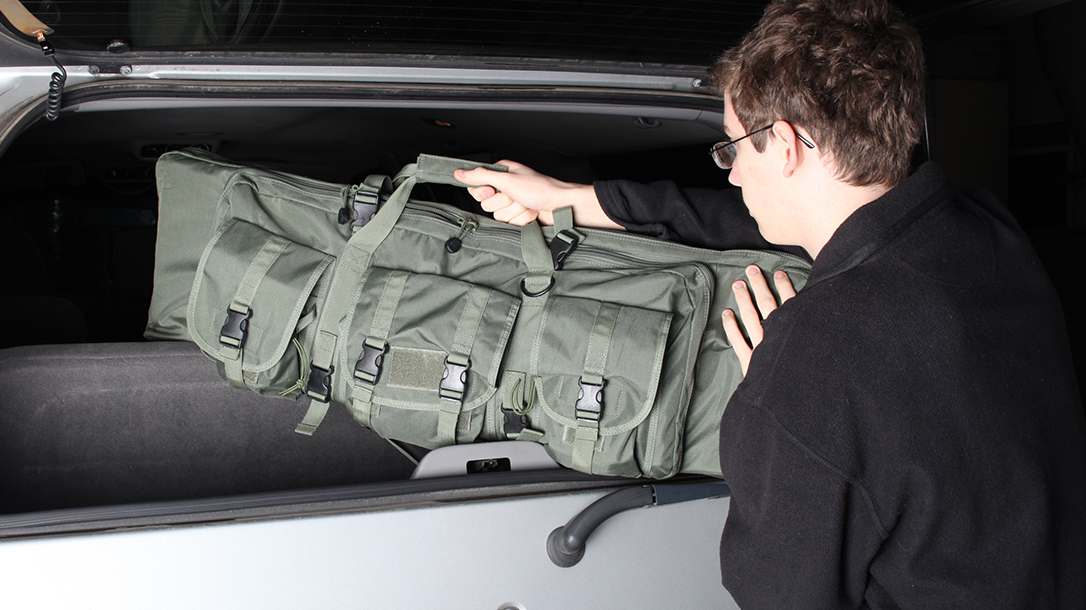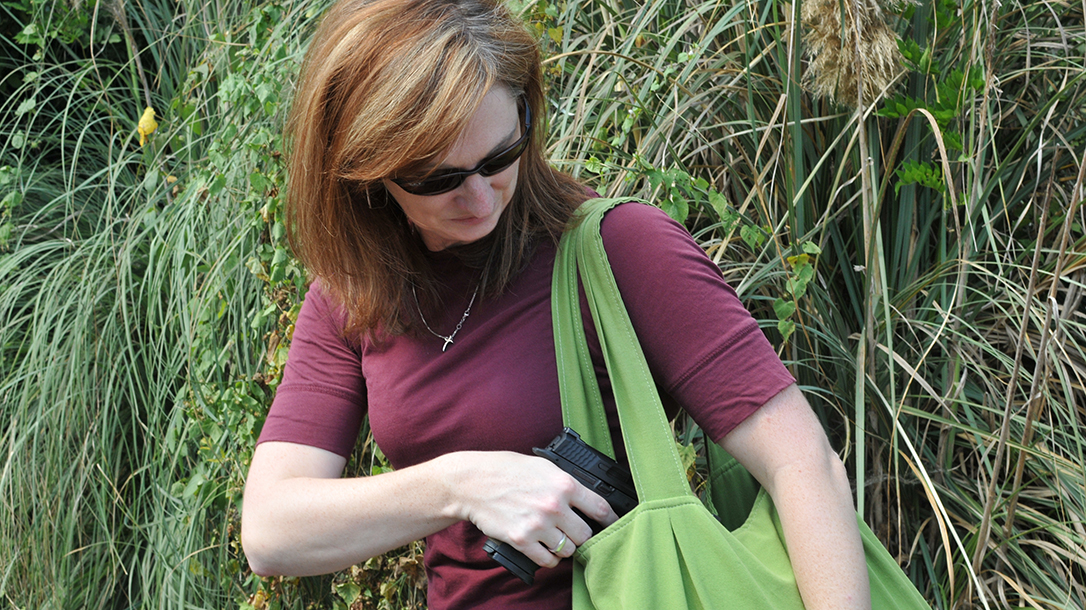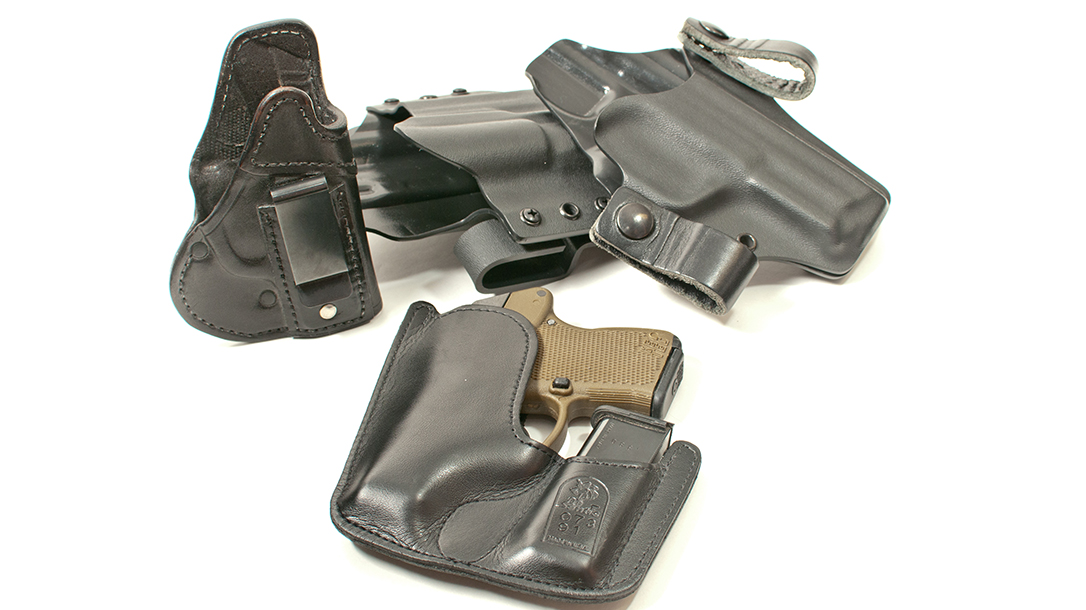Americans live in a highly mobile society. Couple that with the increasing popularity of concealed carry and you can see the value of understanding how to stay on the right side of the law when traveling with firearms.
Most states require that gun owners attend classes to learn handgun laws, responsibilities, safe use and proficiency. Lawmakers have acknowledged that citizens travel beyond their borders, and nonresidents wish to protect themselves and loved ones. In response, lawmakers have passed reciprocity laws that let other states’ carry permit holders legally carry in their states.
Advertisement — Continue Reading Below
When traveling to other states, by highway or air, remember special conditions that warrant close attention. When you know the rules, traveling with firearms can be safe and headache-free.
Traveling With Firearms On The Road
Surprisingly, traveling with guns is much the same today as it was in 2001. Driving on the interstate to your destination is still governed by the laws of the state through which you’re traveling. Check them out beforehand to keep abreast of restrictions.
Typically, you can legally transport firearms across state lines with them locked in a gun case out of reach and ammunition in a separate container. Laws and restrictions regarding those with CCW permits become more complex.
Advertisement — Continue Reading Below
Consider the 2013 story of Shaneen Allen. This Pennsylvania mother drove to nearby New Jersey to deliver her child’s birthday cake. Police stopped her for an unsafe lane change. Allen told the officer she had just received her carry permit and had a pistol in her possession. The officer arrested her on the spot. Allen also caught a charge for having her Bersa .380 ACP loaded with hollow-point bullets, too. Because of the arrest, Allen faced a potential three-year prison sentence. It took almost two years of legal wrangling before her legal troubles were finished.
In another case, police arrested a 72-year-old retired teacher for possessing an antique boxlock pistol made before America declared its independence. Gordon Van Gilder was driving home from an antique dealer when a New Jersey sheriff’s deputy stopped his vehicle. Van Gilder was arrested, charged with a felony and faced 10 years in prison for transporting an antique weapon that probably hadn’t been fired in 200 years.
A few states are problematic for armed carry, and New Jersey tops the list. Gun-toting folks from other states should also avoid Maryland, Connecticut, Massachusetts, New York, Rhode Island and Washington, D.C. This is in addition to any states that don’t honor a carrier’s permit. In short, carry reciprocity laws differ from state to state, so be sure to know the laws before traveling with guns.
Advertisement — Continue Reading Below
Traveling With Firearms By Plane
Air travel, governed by the Federal Aviation Administration, has specific restrictions on firearms, ammunition and equipment. Some airlines go a step further by adding extra cost or prohibiting some items.
Most carriers—Southwest, American, Delta, JetBlue, Frontier, United and Virgin American—follow FAA minimums, but some have minor variations. Check the requirements of your airline ahead of time to avoid surprises.
Advertisement — Continue Reading Below
You must be at least 18 to check a weapon. At the airport, you must also declare to the ticket counter representative that you’re checking a weapon. If you pass through a security checkpoint before the ticket counter, you must declare the weapon to security personnel. Next present your firearms—unloaded, of course—and sign a firearms-unloaded declaration, which is typically placed inside the gun case. The gun must be locked in a hard-sided, crush-proof container. If the airline allows firearms transport to foreign countries, maintain and keep entry permits for the countries of destination or transit.
Pack ammunition in the manufacturer’s original package or securely packed in fiber, wood or metal boxes. Place in your checked luggage. FAA regulations limit ammunition to 11 pounds, with some airlines specifying less. Some airlines allow ammunition carried in loaded magazines separate from the gun, but others say that’s a no-no.
The FAA requires rifles and shotguns to be transported in a separate hard-sided case that can be locked. Pistols must also be transported in a hard case, but it can be packed inside another checked suitcase.
Advertisement — Continue Reading Below
10 Pro Tips For Traveling With Firearms
After logging a few hundred thousand miles traveling with firearms, I’ve learned some tips that can stack the odds in your favor for arriving with your equipment in good working order.
- Show up early if you’re going to fly. Although check-in times have been reduced lately, some travelers have experienced three-hour delays from curbside to gate.
- Photograph your firearms and keep a record of their serial numbers. If a gun is stolen or lost by an airline, a photo is handy for identification or justification of its value. High-value guns should be insured if they exceed an airline’s limit of liability.
- Invest in a metal gun case fitted with a cross bar that’s locked down with a padlock. These cases are worth the added expense because they will outlast lower priced hard plastic models.
- When packing a gun in an airline-approved hard case, include a padded soft gun case for extra protection. Also, some states require guns to be cased in a vehicle, and a soft gun case is more convenient.
- Pack your rifles or shotguns with the bottom of the gun toward your hard case’s hinge. If a careless baggage handler drops your gun case there is less chance of the sights or scope hits the hinge.
- Tape gun case latches to keep them from becoming snagged on baggage conveyors, but wait until after you fill out a firearm declaration card and lock your case.
- Attach a laminated card with your name and address to the outside of your gun case when traveling on a commercial airline. Also include your name and address inside of the case. If your luggage tags and baggage claim tags get ripped off, the airline can still identify your equipment.
- If your gun can be broken down, consider casing it in a more compact model that is easier to handle and takes up less space.
- Keep gun cases and guns out of sight when possible. Locked hotel rooms are safer than securing guns in a vehicle. It takes a thief only seconds to break a window or open an unlocked door.
- Another case option is to use a hard-sided golf bag case. I don’t golf, but I know folks who stow their guns in these spacious cases and pack clothes around them for protection.



























